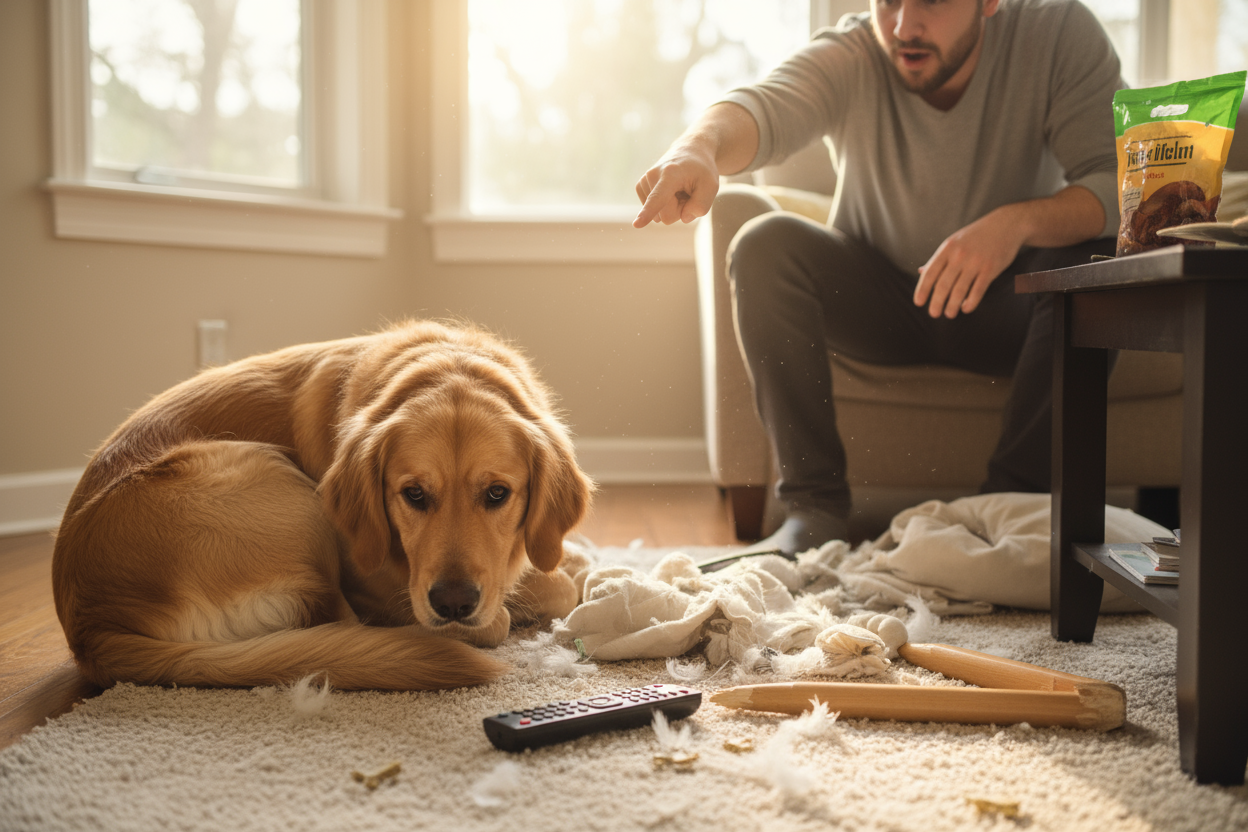Bringing a new baby into your home or adding a dog to a household with young children is a moment filled with joy, anticipation, and excitement. But it also requires thoughtful preparation. Many families envision harmony from the beginning, imagining their child and dog growing up as best friends. While this is a beautiful hope, it is important to approach the process with realism and education. Children and dogs can absolutely thrive together, but their relationship must be built on safety, supervision, and mutual respect.
As both a veterinarian and dog behaviorist, I often meet families who are either expecting a child or planning to introduce a new dog into a busy household. I always tell them that this transition period is a critical time to educate themselves, set up their environment thoughtfully, and take steps to reduce the risk of conflict or injury. The goal is not just to prevent problems but to foster a home environment where both children and dogs feel secure and respected.
If you have a baby on the way or you are considering bringing a new dog into a home with young children, now is the time to start preparing. One of the best resources I recommend to families is the website www.familypaws.com. This is a fantastic platform created specifically for families with dogs and young children. The site offers practical guidance on how to safely introduce babies and toddlers to the family dog, how to read canine body language, and how to set up your home to support safe interactions. The information is evidence based and family focused, with guidance that works in real life, not just in theory.
Another helpful article I recommend is found at www.safety.com. Their piece on keeping babies safe around pets does a great job of covering key considerations for new parents. You can read the article at https://www.safety.com/how-to-keep-your-baby-safe-around-your-pets. It emphasizes many of the same safety principles I teach in practice: awareness of body language, the importance of boundaries, and the absolute necessity of active supervision.
One of the most underutilized tools I encourage for families with young children and dogs is the basket muzzle. I realize that for many people, the idea of using a muzzle feels extreme or even shameful. There is a widespread but deeply flawed belief that muzzles are only for aggressive or dangerous dogs. In reality, a properly fitted and properly introduced basket muzzle is simply a tool— a fence for your dog’s teeth. It adds an extra layer of safety and allows for peace of mind, especially during high stress moments, changes in routine, or interactions with young children who may not yet understand boundaries.
The truth is that even the most attentive parent cannot watch every single moment. Distractions happen. A child may stumble, fall onto the dog, grab at fur or ears, or make a loud noise that startles the dog. Dogs have limits, just like humans. Even a tolerant dog may eventually have a moment when they are overwhelmed or physically uncomfortable. A basket muzzle gives you a margin of safety in those unpredictable seconds. It is not a substitute for supervision, but it is a valuable layer of prevention.
When introduced correctly, many dogs learn to enjoy wearing a basket muzzle. The key is to associate the muzzle with positive experiences such as treats, praise, and gentle handling. With time and patience, dogs come to view the muzzle as a signal that something good is about to happen. This process can be both easy and rewarding, and it is an excellent investment in your family’s safety and your dog’s long term success in the household.
My favorite basket muzzle is the Baskerville Ultra. It is strong and durable while remaining soft and flexible. It allows the dog to pant, bark, drink, and even take treats. You can find it at https://www.amazon.com/Baskerville-Ultra-Basket-Dog-Muzzle/dp/B0051H45GC. When sized and fitted properly, it can be worn comfortably for short or extended periods.
If you are unsure how to introduce the basket muzzle to your dog, there is an excellent instructional video that walks you through the steps in a simple, positive way. You can watch it here: https://www.youtube.com/watch?v=T1hhFS1YH8I. The video demonstrates how to build trust with your dog and how to make muzzle time a happy experience.
Whether you are welcoming a baby into the home or adding a new dog to your family, preparation is essential. The most loving homes are not the ones without stress or challenges. They are the ones where the humans take the time to understand and meet the needs of every family member, including the dog. By learning about dog behavior, using preventive tools like basket muzzles, and committing to respectful supervision, you create a foundation for safety and harmony.
The more we educate ourselves and prepare, the better our chances of preventing problems before they start. There is no shame in using the tools available to keep your family safe. In fact, there is great wisdom in doing so. Your dog deserves to feel safe. Your child deserves to be protected. And you, as the parent and guardian of both, deserve peace of mind.
So take the time to explore the resources. Invest in training and preparation. Learn about body language and stress signals. And do not be afraid to use tools like basket muzzles when needed. These small steps now can make a world of difference later.
Amanda Hall-Phillips, DVM
Veterinary Behavior Practitioner
Serving Valdosta Georgia, Thomasville Georgia, Tifton Georgia, and Tallahassee Florida



